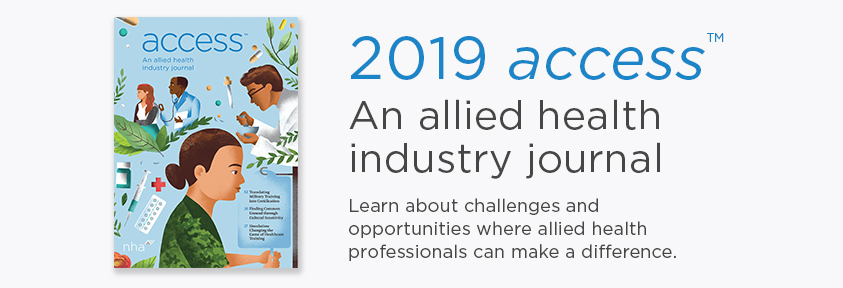Health promotion and disease prevention (HPDP) play a vital role in avoiding disease, delaying onset of signs and symptoms of disease, preventing premature death, promoting quality of life and decreasing economic liability on the healthcare system. Promoting a lifestyle that includes healthy eating patterns have been deemed to be cost effective for the prevention of diabetes,1 cardiovascular disease2 and an optimal nutrition status has been shown to be crucial in obesity prevention.3,4
Chronic conditions related to eating patterns
In the past 100 years, the prevalence of essential nutrient deficiencies has decreased considerably due to treatment for most infectious diseases. The average life expectancy for Americans has changed from 54.5 years in 1916 to 78.7 years in 2012.5 Sadly, while incidence of communicable diseases has decreased, rates of chronic diet-related disease have increased. Chronic diseases like cardiovascular disease, high blood pressure, type 2 diabetes, some cancers and arthritis are the leading cause of disability and death in the U.S.6 Poor eating and decreased physical activity patterns have resulted in substantial health challenges for the population.
Approximately 50 percent of all adults in the U.S. suffer from one or more preventable chronic diseases caused by modifiable risk factors.6,7
Under-nutrition and the associated chronic diseases come at a financial cost. In 2010, 86 percent of all healthcare spending was for individuals with one or more chronic medical conditions.8 The total costs of heart disease and stroke in 2010 were estimated to be $315.4 billion. The total estimated cost of diagnosed diabetes in 2012 was $245 billion.10
Interprofessional collaboration
An essential component in enacting quality, results-focused healthcare is the creation of interprofessional teams that may include RDNs, medical assistants, registered nurses, physicians, licensed practical nurses, and pharmacists.
A high-functioning team of professionals is needed to coordinate preventive care and education for patients, including promoting and improving health and self-care and ensuring that patients’ risk factors for the development of chronic health conditions like high weight and obesity are mitigated and managed. In certain healthcare settings, clinical medical assistants are an important component, especially in the screening process. Clinical medical assistants are helpful in screening patients for weight, obesity and malnutrition and routing patient consults within the team to the RDN.
Accountable Care Organizations
The creation of Accountable Care Organizations (ACOs) network focused on increasing quality of care and reducing cost by creating a network of physicians, hospitals, ambulatory care organizations, PCMHs (patient-centered medical homes), home health agencies, pharmacies, and other healthcare organizations to partner in delivering services is a growing trend. As of January 2016, there were 838 ACOs in the U.S. This expanding model of care thrives on interprofessional collaboration and development of best practice approach to care delivery.
Case studies
The Rio Grande Valley ACO Health Providers in Texas, established in 2012, has developed a program that focuses on preventing complications for those living with diabetes mellitus. Their program includes a diabetes program in every physician’s office. Nutritionist technician, RDN, medical assistants, and care coordinators work to enable providers to adjust patients’ medications between office appointments.
The U.S. Department of Veterans Affairs offers Healthy Teaching Kitchens (HTK), which teach veterans and their caretakers healthy cooking skills. Some programs target veterans based on their specific diagnosis. The Providence Health and Services organizations offer food-insecure patients an HTK and Food Pharmacy Program, which follows a comprehensive approach to proper nutrition, regular exercise, stress reduction and rest. In addition to cooking classes and individualized counseling to stimulate lifestyle changes, physicians write prescriptions for food to be redeemed at a physical food pharmacy to support patients’ nutrition program. The pharmacy offers access to nutritious produce to supplement patients’ diets and address individual medical issues through diet.
Scripps Mercy Hospital and Rady Children’s Hospital in San Diego offer “Let’s Get Cooking” classes. The classes target the reduction of diabetes, asthma and heart-related conditions, which are disproportionately high in the neighborhoods they serve.
Implications for practice
Complex health issues such as overweight, obesity, malnutrition, and chronic disease require a network of services and multifactorial approach to solutions. Effective chronic disease prevention should occur across an individual’s lifespan. Health promotion and disease prevention strategies must be delivered across the continuum of care networks.
References
- Research Group. DPP. Within-trial cost-effectiveness of lifestyle intervention or metformin for the primary prevention of type 2 diabetes. Diabetes Care. 2003;26(9):2518-2523.
- Weintraub WS, Daniels SR, Burke LE, et al. Value of primordial and primary prevention for cardiovascular disease. A policy statement from the American Heart Association. Circulation. 2011;124(8):967-990.
- Lehnert T, Sonntag D, Konnopka A, Riedel-Heller S, KÅ~nig HH. The long-term cost-effectiveness of obesity prevention interventions: Systematic literature review.
Obes Rev. 2012;13(6):537-553. - Loveman E, Frampton G, Shepherd J, et al. The clinical effectiveness and cost-effectiveness of long-term weight management schemes for adults: A systematic review. Health Technol Assess. 2011;15(2):1-6.
- Center for Disease Control and Prevention, National Center for Health Statistics. Vital Statistics of the U.S. 2016; FastStats (Centers for Disease Control and Prevention, updated September 1930, 2015). http://www.cdc.gov/nchs/products/vsus.htm. Accessed September 10, 2016.
- Center for Disease Control and Prevention. Chronic Diseases: The Leading Causes of Death and Disability in the U.S.. 2016. http://www.cdc.gov/chronicdisease/overview/. Accessed September 10, 2016.
- Ward BW, Schiller JS, Goodman RA. Multiple chronic conditions among US adults: a 2012 update. Prev Chronic Dis 2014. http://dx.doi.org/10.5888/pcd11.130389. Accessed September 10, 2016.
- Gerteis J, Izrael D, Deitz D, et al. Multiple Chronic Conditions Chartbook AHRQ Publications No, Q14-0038. 2014. http://www.ahrq.gov/sites/default/files/wysiwyg/professionals/prevention-chronic-care/decision/mcc/mccchartbook.pdf. Accessed September 10, 2016.
- Go AS, Mozaffarian D, Roger VL, et al. American Heart Association Statistics Committee and Stroke Statistics Subcommittee. Heart disease and stroke statistics--2014 update: a report from the American Heart Association. Circulation 2014;129(3):e28-292. 2014. http://circ.ahajournals.org/content/early/2013/12/18/01.cir.0000441139.02102.80.full.pdf. Accessed September 10, 2016.
- American Diabetes Association. The Cost of Diabetes. 2015. http://www.diabetes.org/advocacy/news-events/cost-of-diabetes.html. Accessed September 10, 2016.
- Joss-Moore LA, Lane RH. The developmental origins of adult disease. Curr Opin Pediatr. 2009;21(2):230–234.
- Office of Disease Prevention and Health Promotion. About Healthy People. 2014. https://www.healthypeople.gov/2020/default. Accessed September 10, 2016.
- U.S. Department of Health and Human Services and U.S. Department of Agriculture. 2015 – 2020 Dietary Guidelines for Americans. 8th Edition. December 2015. Retrieved September 10, 2016 from http://health.gov/dietaryguidelines/2015/guidelines/.
- U.S. Preventive Services Task Force. Recommendations for Primary Care Practice. 2016. Retrieved September 10, 2016 from http://www.uspreventiveservicestaskforce.org/Page/Name/recommendations.
- Center for Disease Control and Prevention. National Prevention Strategy: America’s Plan for Better Health and Wellness. 2014. Retrieved September 10, 2016 from http://www.cdc.gov/features/preventionstrategy/




